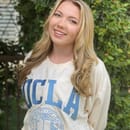If you’re anything like me and you’ve spent your latest free time scrolling TikTok trying to get in your social media fix before the app is kaput, you’ve probably come across videos of people tackling the “75 Hard” challenge. From dramatic before-and-after transformations to daily check-ins, it seems like everyone is diving headfirst into the new year by immersing themselves into this grueling program. But for every “75 Hard” enthusiast showing off their discipline, there’s someone else embracing a gentler, more flexible alternative: the “75 Soft” challenge.
Not only have these challenges completely dominated social media, but they’ve also sparked debates about which approach is better for building long-term habits, authentically enhancing wellness, and transforming your mindset for the long run. For college students, though, the question becomes even trickier. With your time divided between classes, internships, clubs, jobs, and friends, how do you decide which works best for you? Well, look no further, because this article will break down the best and the worst of these two programs to give you an answer on which “75” fits your lifestyle, goals, and personality in the best way possible.
What is the “75 Hard” program anyway? If you didn’t already know, this challenge was created by entrepreneur Andy Frisella, in which participants commit to a strict regimen for 75 consecutive days, including two daily 45-minute workouts (one outdoors), a no-cheat diet, drinking a gallon of water, reading 10 pages of a nonfiction book, and taking a progress photo every day. Every. Day. The catch? If you miss even one task, you start over from day one. Entirely.
So, is “75 Soft” just the “easy version” of “75 Hard”? Short answer: no. Long answer: I’m so glad you asked! In contrast, this challenge has emerged as a gentler alternative for those who want the disciplined structure of a “75 Hard” without the same intensity. Its rules are much simpler and often determined by the participant’s specific personal goals. For example, individuals will most likely opt to follow a healthy diet or eat intuitively, exercise for 45 minutes daily, drink three liters of water, and read 10 pages of a book. Unlike its harder counterpart, “75 Soft” prioritizes balance and flexibility, allowing participants to focus on wellness without risking burnout so they can continue these habits long after the 75 days have passed.
So, how do you know which works best for you?
If you’re a person who thrives on structure, discipline, and the constant desire to push yourself beyond what you think is capable (aka, marathon runner, competitive eater, academic superstar, student-athlete, etc.), “75 Hard” may be your perfect match. This challenge could also benefit those interested in trying to make a hard and fast lifestyle change in order to accomplish something quickly rather than form habits over time, like if you are training for an upcoming 5k or mentally preparing yourself to start a new chapter in your life post-graduation.
That said, while for some “75 Hard” can be life-changing, it definitely isn’t for everyone. The time commitment, rigid guidelines, and lack of flexibility can make it tough to manage alongside a hefty class schedule, frequent social events, and other obligations. If you’re prone to burnout or prefer a more balanced approach, “75 Hard” might feel more like an unrewarding chore.
If you value balance, flexibility, and long-term habits in your life, the “75 Soft” challenge can offer a refreshing alternative. Just because something has the word “soft” in it, doesn’t mean it’s easy or laid-back. Pushing yourself to bring new health-focused habits into your life takes work no matter how intensely you establish them. While this alternative still promotes consistency and self-improvement, it doesn’t demand perfection. This makes it ideal for participants who want to focus on slowly implementing wellness into their routines without having to sacrifice their social lives, careers, or academic performance.
With “75 Soft”, you can adapt the program to fit your schedule. Have a busy day packed with lectures and group projects? A brisk walk to and from your class could count as your workout. Craving comfort food after a long study session? You can indulge without having to punish yourself by starting right back at Day 1. This program encourages self-care and sustainability, which can be especially important during stressful times like finals week. Ultimately, “75 Soft” is a reminder that personal growth doesn’t have to come at the expense of balance, making it a great choice for those looking to enter into a healthier era of their life.
At the end of the day, both challenges have the potential to be transformative. If you’re needing a fast-paced change that’s strict with high stakes, “75 Hard” is the way to go. If you’re looking to implement healthy, attainable habits that can last well beyond 75 days, “75 Soft” is your best bet. And if neither feels like the perfect fit, you can even create a “75 Medium” by mixing habits from both challenges for a balanced combination. It’s not about which challenge is objectively better or which will burn the most calories. It’s about which challenge fits you and where you are in your wellness journey. Whatever your choice, either path can lead to incredible growth. Now, go on and conquer the world in 75 days (or more)!


